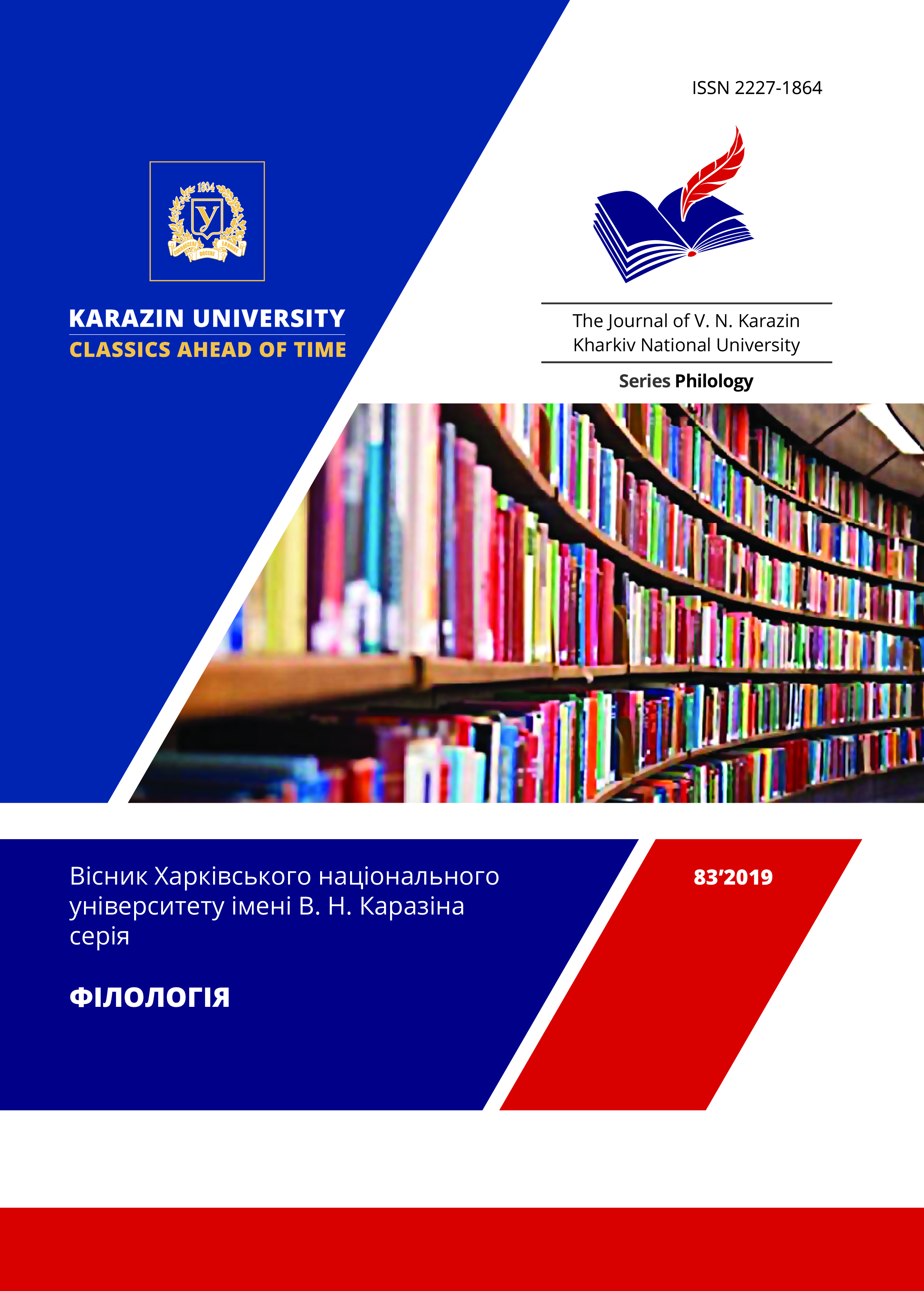The types of the chronotope in the short story «The Murders in the Rue Morgue» by Edgar Poe
Abstract
The article is devoted to the analysis of the time and space peculiarities in the short story «The Murders in the Rue Morgue» by the American writer of the 19th century Edgar Allan Poe. The aim of the article is a analysis of artistic chronotope as a special way of influencing the reader and distinguishing the features of time and space in the analyzed work. E. Poe was the initiator of the «detective short story», the genre features of which are the description of the deduction of the character, the analysis of the event, generalized logical, mathematically accurate reasoning. The image of detective Auguste Dupin is the main in the short story.
There are the real and historical chronotope in this detective short story. The author repeatedly focuses on spatial topos that form a unique authorial style. The character, through the perspective of the narrator's vision, is portrayed in detail, with the psychological factor closer to the finale intensifying, which allows to distinguish the features of personal chronotope. Real historical chronotope uses fictional topos or objects that represent a certain space that carry a symbolic load (the non-existent streets of Paris, the library, the room, etc.). The author skillfully combines real and fictional events to create a unique detective story. All topos are interconnected and complementary, leading to a deep understanding of artistic reality. Real, mystical, historical and social chronotopes are associated with deep psychology, which makes it possible to recreate events and find the right solution to solve the crime. The perspectives of the narrator and the short story's characters on the same event extend the boundaries of the chronotope, giving it additional features. This interconnection of chronotopes in the short story not only shapes the complex artistic world of the nineteenth century, but also makes it possible to refer the analyzed work to the literature of romanticism.
Downloads
References
Aizentcvaig, U. (1990) Interviu s Alenom Rob-Griie. Kak sdelat detektiv / za red. N. Partugimova. Moskva : Raduga, pp. 273-278.
Andzhaparidze, G. (1990) Detektiv : zhestkost kanona i vechnaia novizna. Kak sdelat detektiv / zv red. N. Partugimova. Moskva : Raduga, 1990, pp. 279-292.
Van-Dain, S. S. (1990) Dvadtcat pravil dlia pisaniia detektivnykh romanov. Kak sdelat detektiv / za red. N. Partugimova. Moskva : Raduga, pp. 38-41.
Gilenson, B. A. (2003) Istoriia literatury SSHA : Ucheb. posobie dlia stud. vyssh. ucheb. zavedenii. Moskva : Akademiia. [in Russian]
Kestkheii, T. (19890 Anatomiia detektiva. Budapesht : Korvina. [in Russian]
Kovalev, Iu. V. (1984) Edgar Allan Po : Novellist i poet. Leningrad : Khudozhestvennaia literatura. [in Russian]
Poe, E. A. (2018) Vbyvstvo na vulytsi Morh = The murders in the rue Morgue Edgar / Edhar Allan Po = Allan Poe; per. z anhl. Yu. Lisniaka, V. Horbatka; khudozh. ̶ oformliuvach V.M. Karasyk. – Kharkiv: Folio.[In Ukrainian]
Chesterton, G. K. (1990) V zashchitu detektivnoi literatury. Kak sdelat detektiv / za red. N. Partugimova. Moskva : Raduga, pp. 16-19. [in Russian]
Conliffe, C. Eugène François Vidocq, French Criminal turned Detective. Available at: https://muckrack.com/ciaran-conliffe/articles
Роe, E. A. (1983) Prose and Poetry. Moscow : Raduga.
Роe, E. A. The Mystery of Marie Roget. Available at: http://xroads.virginia.edu/~HYPER/POE/m_roget.html
Роe, E. A. The Purloined Letter. Available at: https://poestories.com/read/purloined




